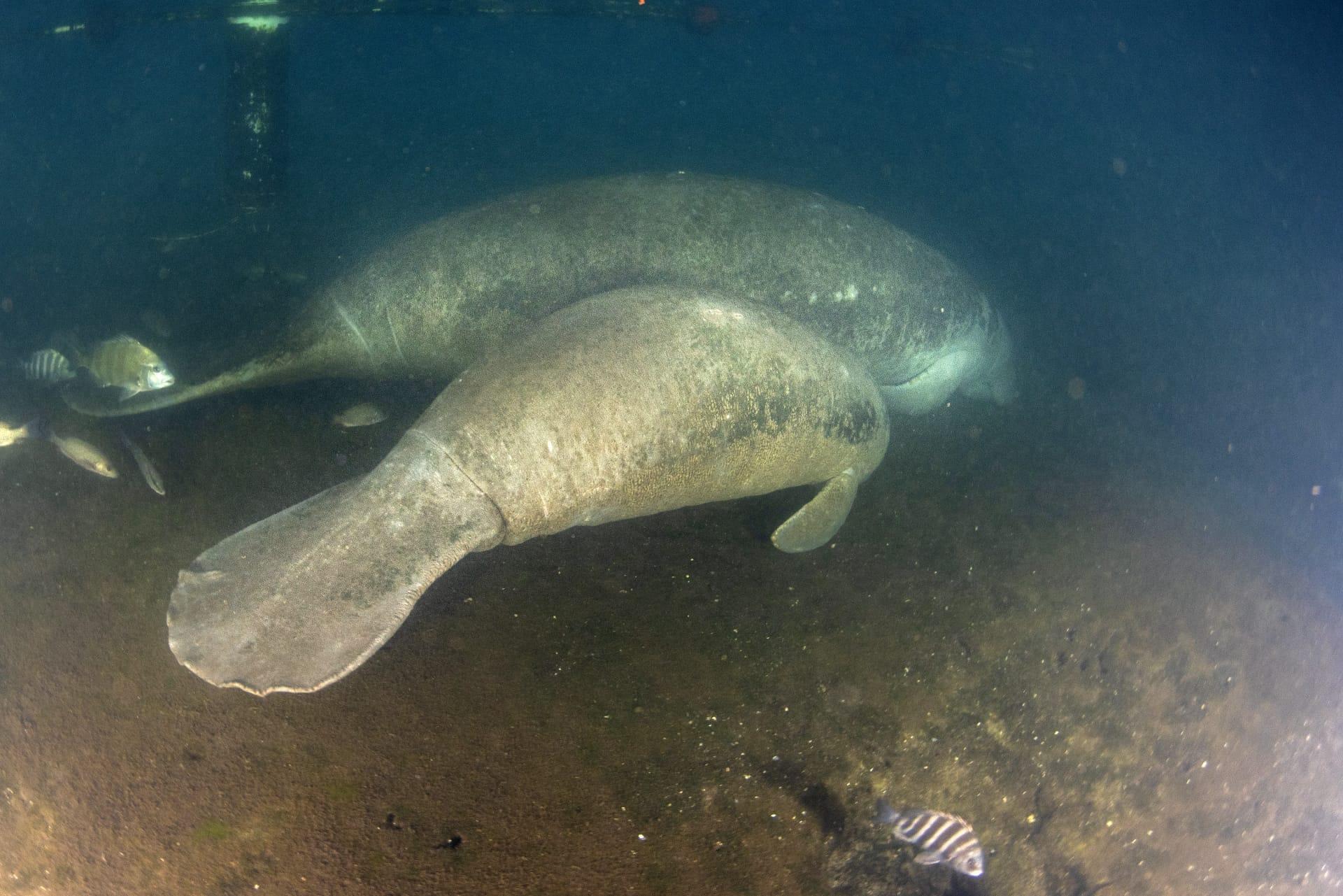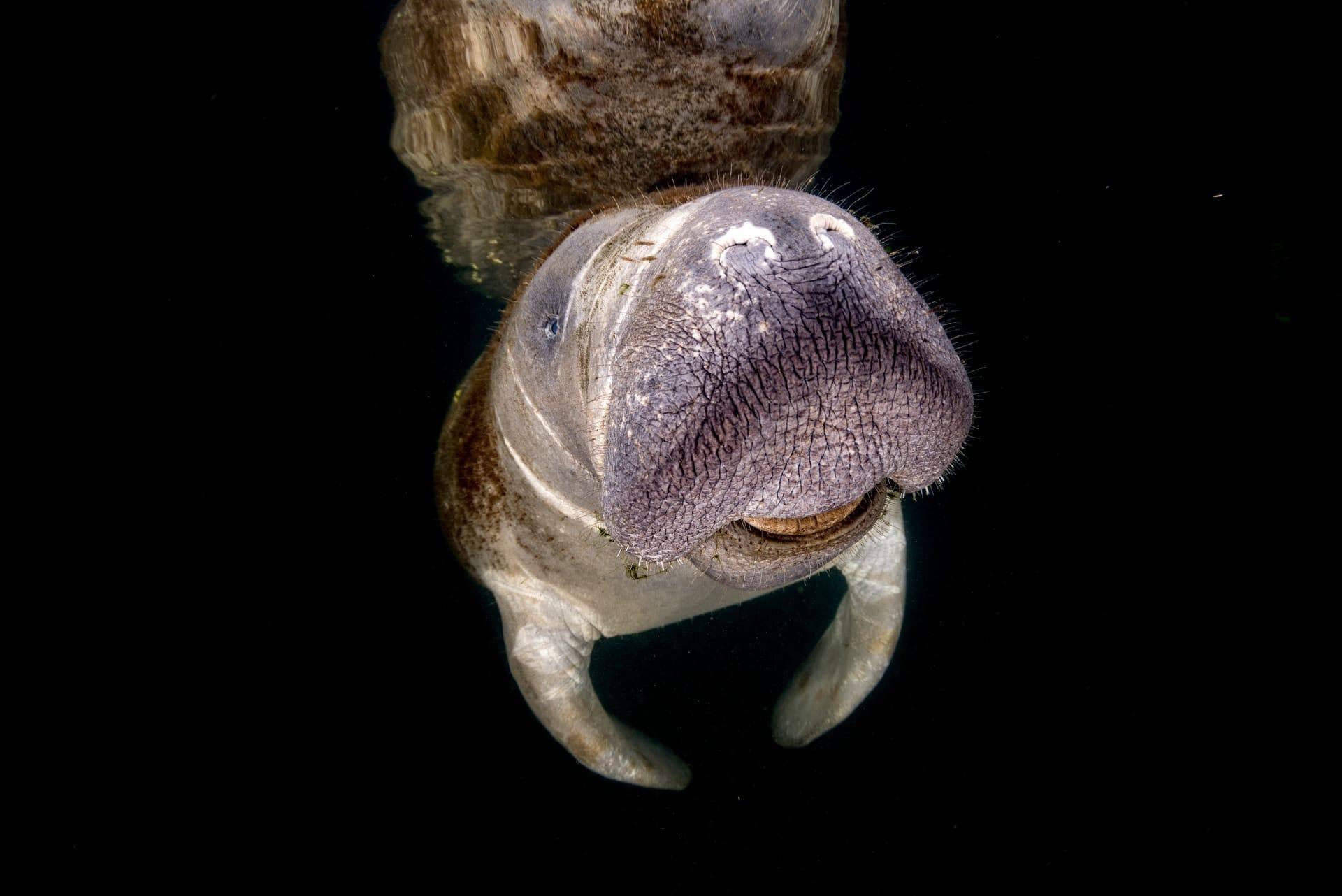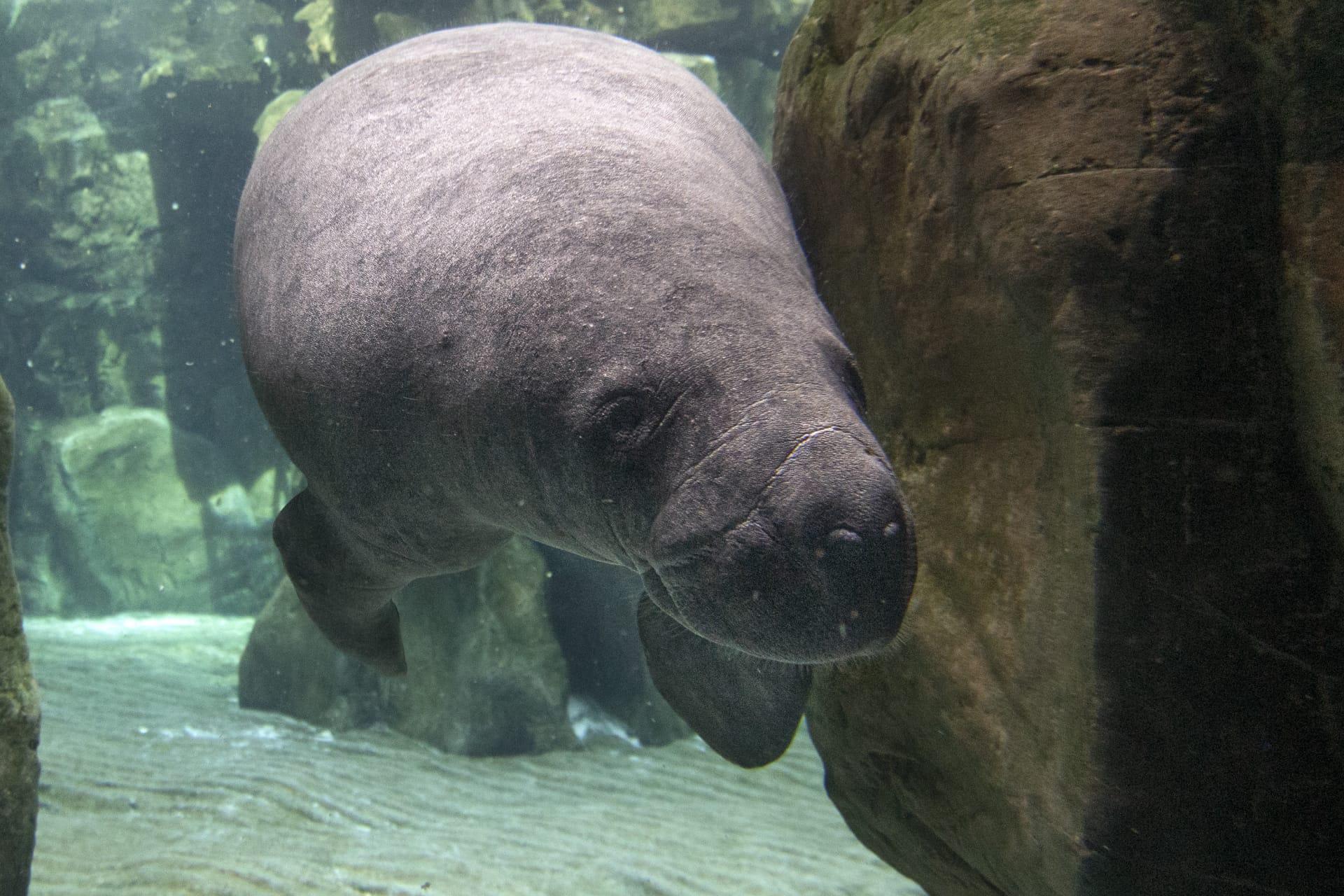1
Manatees, often nicknamed "sea cows," are large marine mammals known for their gentle nature. An adult manatee can measure up to 13 feet (about 4 meters) in length and weigh as much as 1,300 pounds (around 590 kilograms). Despite their size, they are graceful swimmers, often seen gliding through warm coastal waters at a leisurely pace of around 5 miles per hour (8 kilometers per hour).
Manatees have a remarkably long lifespan, living up to 60 years or more in the wild. Their longevity is quite impressive considering their slow reproduction rate. Female manatees typically give birth to a single calf every two to five years, following a gestation period of about 13 months. This slow breeding cycle makes their populations vulnerable to threats like habitat loss and human activities.

2
The diet of a manatee is exclusively herbivorous, consisting mainly of seagrasses and freshwater vegetation. These gentle giants spend up to eight hours a day grazing, consuming about 4% to 9% of their body weight daily. This amounts to approximately 100 pounds (45 kilograms) of vegetation. Their constant grazing plays a crucial role in maintaining healthy marine ecosystems by controlling the growth of aquatic plants.
Manatees possess a unique feature among mammals: they continuously replace their teeth. As the front teeth wear down, new teeth emerge at the back of the mouth and slowly move forward, akin to a conveyor belt. This adaptation is particularly useful given their diet of abrasive plants, ensuring their teeth don't wear down too quickly.

3
Manatees are known for their exceptional sense of hearing, despite lacking external ear lobes. They have large inner ear bones, enabling them to detect a wide range of sounds. This acute hearing is vital for communication, navigation, and predator awareness. Manatees communicate through a range of vocalizations, including chirps, whistles, and squeaks, which can be heard over long distances underwater.
Unlike other marine mammals that migrate long distances, manatees prefer to stay in small geographic areas. They are primarily found in shallow, slow-moving rivers, estuaries, saltwater bays, canals, and coastal areas, particularly where seagrass beds or freshwater vegetation are abundant. Manatees are mostly seen in Florida's waterways during winter, seeking warm-water refuges like springs and power plant discharges to survive the colder temperatures.

4
Manatees have a very low metabolic rate and minimal fat protection, which is unusual for marine mammals. This adaptation allows them to conserve energy, but it also makes them highly susceptible to cold water. Water temperatures below 68°F (20°C) can be lethal to them. This sensitivity to cold is one of the reasons why manatees are so prevalent in Florida, where water temperatures tend to be warmer year-round.
Interestingly, manatees have no natural predators in the wild. Their primary threats come from human activities, such as habitat destruction, boat strikes, and entanglement in fishing gear. They are a protected species under the U.S. Endangered Species Act and the Marine Mammal Protection Act, reflecting the ongoing efforts to conserve and increase their populations.

5
Manatees are capable of understanding discrimination tasks and show signs of advanced long-term memory. They demonstrate problem-solving skills in experimental settings, indicating a higher level of intelligence than previously thought. This cognitive ability is crucial for their survival, as it helps them navigate complex environments and find food sources.
Manatees play a crucial role as ecosystem engineers. By feeding on aquatic plants, they help to keep waterways clear and maintain the health of seagrass beds, which are vital habitats for many marine species. Their grazing activities can influence the distribution and abundance of seagrass, thereby shaping the marine environment in a significant way.